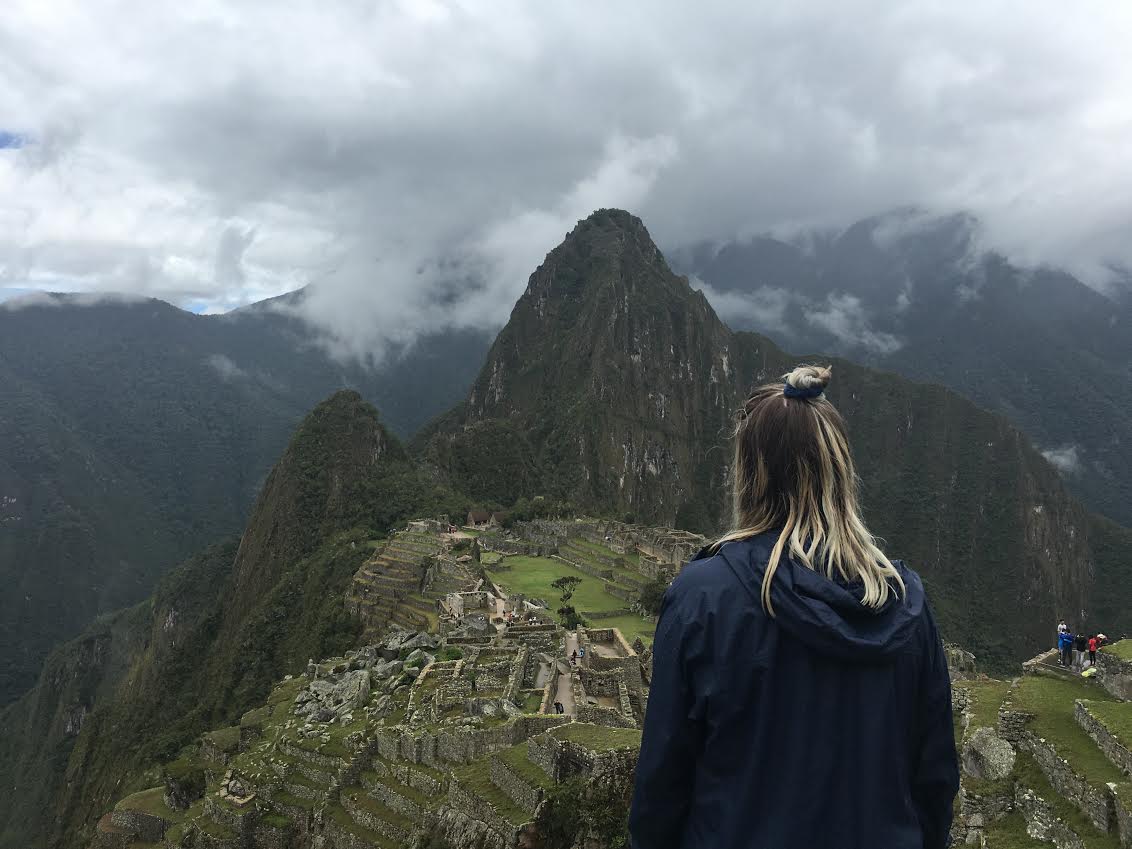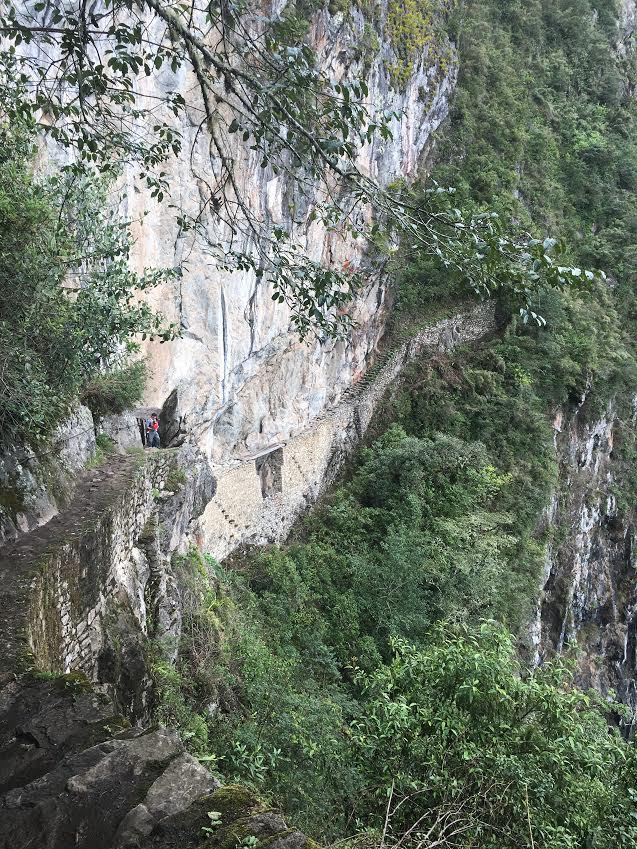Hiking along this narrow path, free of tourist bustle, Honors Passport explorer Rachel Lindsey experiences her transformative moment at Machu Picchu.
I had the remarkable opportunity to visit Machu Picchu along with the rest of the Honors Passport group. Most of what I knew about Machu Picchu before actually visiting concerned the effect it can have on the observer—I have always heard that seeing the site for yourself is a mystical, transformative, experience.
Without realizing it, I had set expectations for how I should feel while at Machu Picchu, one of the seven wonders of the world. This schema I had developed was not initially fulfilled. We arrived at the site and spent most of the sunny, dry, morning maneuvering through droves of fellow tourists in an effort to keep up with our chatty tour guide. Strikingly aware of the experiences of those before me, I felt pressured to discern a change within myself, or meet with a significant moment of clarity. Frustrated, I left for lunch along with the rest of the students and faculty.
During lunch, we organized into smaller groups to embark on hikes to different landmarks in the area. By this time, it had started to rain and a hazy fog had settled over Machu Picchu – no doubt similar to the classic image evoked by tales of the mysticism of the ruins. I zipped up my raincoat and joined two of the other girls. We set out up the seemingly endless steps to reach our destination—the Inca Bridge. It took us a few attempts to find the right path, but we trekked on our own, upwards and unguided, through the jungle. We were accompanied only by a pronounced silence as we followed a narrow trail that was absent of both other tourists and a guard rail.
We stopped a couple times to simply catch our breath, look around, and attempt to soak in our surroundings, as well as grapple with the gravity of merely being present at such a salient site of the Inca Empire. Taking a few moments to snap some pictures we became aware of the humidity that had set in with the afternoon rain, which caused our camera lenses to fog up. Soon moving on, we quickly reached the end of the trail. We were met with vast views that differed drastically from what we had previously seen.
The Inca Bridge, a bridge that was presumably used to travel back and forth to Machu Picchu when it was in use, was quite precarious. Narrow, incredibly high up on the side of an adjacent mountain, and now in a dilapidated state, just the sight of it left us both wary at the thought of crossing it, and in awe of the bravery and determination of these people who had lived so long before us. Sometimes you hear that the Inca were some sort of superhuman breed, and standing there on that muddy, precipitous, path we might have begun to believe it.
Without realizing it, I had experienced the feelings I was earlier pressuring myself to feel. I learned that in order to experience what shaped my vision of Machu Picchu I had to pursue it on my own, allowing myself to freely and independently arrive at my own version of whatever life-altering moment or epiphany would come my way, away from the masses of people, off of the paths constructed for optimized viewing. I had to be more secluded, feeling as if I could have been the first to travel these less frequented trails, but knowing fully well that I was not.



